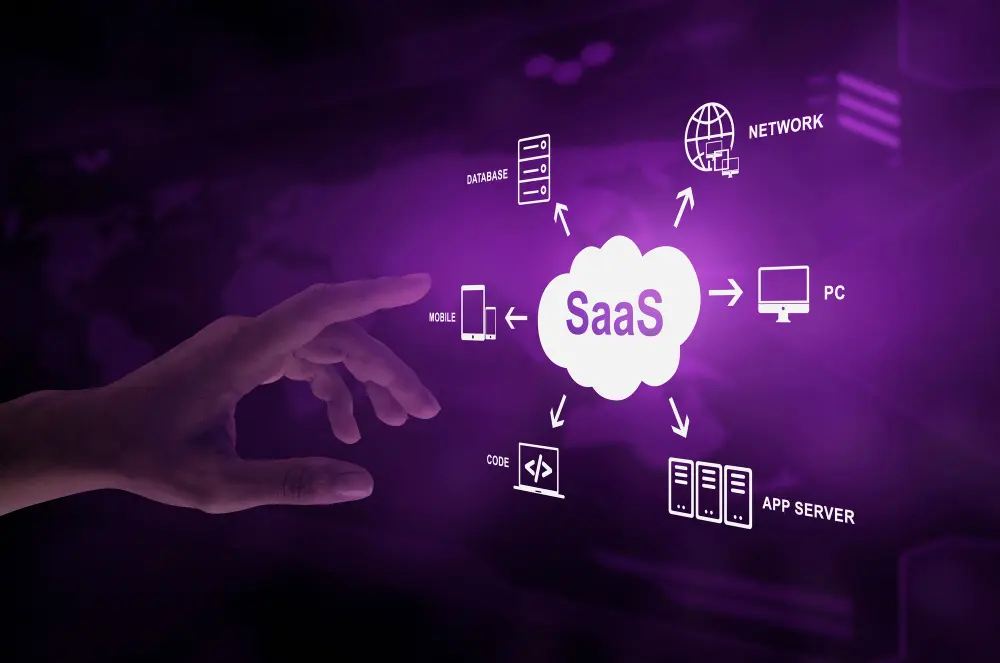Introduction
Welcome to the comprehensive guide that will help you with the knowledge and strategies needed to excel in the dynamic world of SaaS marketing. In this guide, we will dive into various aspects of SaaS marketing, from understanding the unique characteristics of the SaaS landscape to leveraging content marketing, social media, email campaigns, and more.
Understanding the SaaS Landscape
Key Characteristics of SaaS
SaaS, or Software as a Service, fundamentally changes how software is delivered and accessed. Unlike traditional software, SaaS solutions are cloud-based, allowing users to access applications and data online. This offers scalability, flexibility, and cost-effectiveness.
Benefits of SaaS
SaaS brings numerous benefits to businesses, including reduced upfront costs, automatic updates, and easy accessibility. It encourages businesses to focus on their core values while leaving software management to the experts.
Defining Your Target Audience
Identifying Ideal SaaS Customers
Before diving into marketing efforts, it’s crucial to identify your target audience. Who can benefit the most from your SaaS solution? Define demographics, pain points, and preferences to narrow down your focus.
Creating Buyer Personas
Craft detailed buyer personas to humanize your audience. Understand their goals, challenges, and behaviours to tailor your marketing strategies effectively.
Crafting a Compelling Value Proposition
Addressing Pain Points
A strong value proposition addresses the pain points your SaaS product solves. Communicate how your solution alleviates challenges and improves users’ lives.
Highlighting Unique Selling Points
What sets your SaaS apart? Whether it’s advanced features, exceptional support, or seamless integration, highlight what makes your offering unique.
Building an Effective SaaS Website
User-Centric Design
Design your SaaS website with the user in mind. Ensure easy navigation, intuitive layout, and compelling visuals that guide visitors toward desired actions.
Clear Navigation and CTAs
Guide visitors through your website using clear calls-to-action (CTAs) and intuitive navigation. Make it easy for users to explore, learn, and convert.
Optimizing for Search Engines (SEO)
Importance of SEO for SaaS
Search engine optimization (SEO) is essential for visibility and organic traffic. Rank higher on search engines to attract users actively seeking SaaS solutions.
On-Page and Off-Page SEO Strategies
Optimize both on-page and off-page elements. Incorporate relevant keywords, create valuable content, and build authoritative backlinks to enhance your SaaS website’s credibility.
Leveraging Content Marketing
Creating High-Quality Blog Posts
Share valuable insights through engaging blog posts. Address industry trends, challenges, and solutions, establishing your SaaS brand as an industry thought leader.
Using Educational eBooks and Guides
Offer in-depth educational resources like eBooks and guides. Provide actionable insights that showcase your expertise while capturing leads’ interest.
Engaging with Social Media
Selecting Relevant Platforms
Find out the social media platforms your desired audience frequents. Share engaging content, interact with users, and foster community around your SaaS brand.
Fostering Community Engagement
Encourage user-generated content, host Q&A sessions, and initiate discussions to foster meaningful engagement with your audience.
Implementing Email Marketing
Personalized Drip Campaigns
Create personalized email drip campaigns to nurture leads and guide them through the sales funnel. Deliver targeted content based on user behaviour and preferences.
Retention-focused Email Strategies
Retain existing customers by sending relevant content, product updates, and exclusive offers via email. Strengthen customer relationships for long-term success.
Embracing Video Marketing
Explainer Videos and Tutorials
Utilize explainer videos and tutorials to showcase your SaaS solution’s features and benefits. Visual demonstrations enhance user understanding and engagement.
Customer Testimonials and Case Studies
Share success stories through customer testimonials and case studies. Provide real-world examples of how your SaaS product has positively impacted businesses.
Offering Free Trials and Freemium Models
Convincing Free Trial Offerings
Offer free trials to let users experience your SaaS product firsthand. Communicate the trial’s value and guide users toward conversion.
Effective Freemium Strategies
Implement freemium models with enticing features encouraging users to upgrade to premium versions. Showcase the additional value of premium offerings.
Pricing Strategies and Value Tiers
Tiered Pricing Models
Present tiered pricing options that cater to various user needs. Clearly outline features and benefits for each tier, helping users choose the best fit.
Value-based Pricing
Determine pricing based on the value your SaaS product delivers. Showcase ROI and emphasize how your solution contributes to users’ success.
User Onboarding and Retention
Seamless Onboarding Process
Simplify user onboarding with intuitive tutorials and guides. Ensure users can quickly and effectively start using your SaaS solution.
Continuous Value Delivery
Consistently provide value to users after onboarding. Offer ongoing support, training resources, and updates to retain and delight customers.
Gathering and Utilizing Customer Feedback
Feedback Loops and Surveys
Establish feedback loops through surveys and regular communication. Understand user needs, preferences, and pain points to refine your SaaS solution.
Incorporating User Suggestions
Act on user feedback by implementing valuable suggestions. Show users that their input matters and contribute to product improvements.
Emphasizing Customer Support
24/7 Live Chat and Help Center
Offer 24/7 live chat and a comprehensive help centre to provide immediate assistance. Address user queries and concerns promptly.
Proactive Issue Resolution
Anticipate and address potential issues before they appear. Proactively engage with users to prevent disruptions and ensure their satisfaction.
Analyzing Metrics and Iterating
Key SaaS Metrics to Monitor
Track essential metrics like customer acquisition cost (CAC), churn rate, and lifetime value (LTV). Analyze data to make informed decisions.
Data-Driven Iteration
Use data insights to refine your SaaS marketing strategies continuously. Adapt and optimize based on performance metrics and user behaviour.
Exploring Partnership and Integration
Collaborating with Complementary SaaS Providers
Form partnerships and integrations with complementary SaaS providers. Expand your solution’s capabilities and tap into new user bases.
Conclusion
Mastering SaaS marketing requires combining industry knowledge, strategic thinking, and a customer-centric approach. By implementing the strategies and best practices discussed in this comprehensive guide, you can confidently explore the ever-evolving SaaS landscape and drive meaningful growth for your business.


